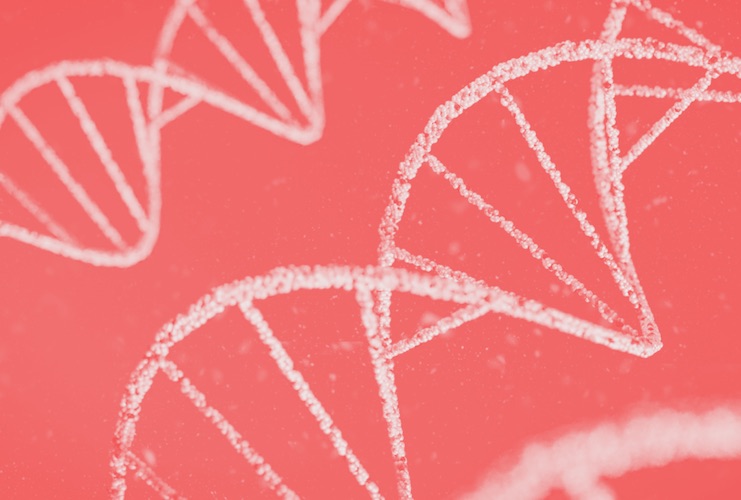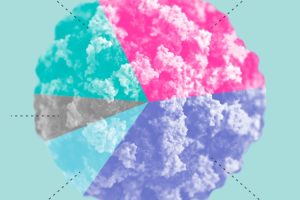Ageing and Disease
Biogerontologist David Gems on the senescence, medical approach to aging and how can you research the fundamen...

How to carry out experiments in biology, interpret the data, where to read about the problem of the regulation of gene activity and the history of the discovery of the structure of DNA. From Charles Darwin to James Watson in the recommended compilation of books about genetics.

Charles Darwin. “The Origin of Species by Means of Natural Selection, or the Preservation of Favoured Races in the Struggle for Life”.
Theodosius Dobzhansky, one of the founders of the synthetic theory of evolution, linking Darwinism to genetics, said that biological phenomenon only makes sense in the light of evolution. This is most certainly true. Reading Darwin’s most renowned book is essential to anyone who wants to do biology, or even a person simply interested in the subject, who is asking themselves a question asked by nearly all children: why is everything living on earth so similar yet at the same time so different? Darwin should be read many times, making notes in the margins and carefully pondering almost every sentence. After reading the ‘Origin of Species, ’ an open-minded person simply cannot avoid accepting natural selection as the main mechanism for the emergence of a diversity of life on Earth. Darwin himself, much better than any of his opponents – both contemporary and present-day – identifies potential problems with the evolutionary view of the development of life and with intellectual brilliance yet without any emotion, offers solutions to these problems. We can only conclude, following the author, that “There is grandeur in this view of life, with its several powers, having been originally breathed into a few forms or into one; and that, whilst this planet has gone cycling on according to the fixed law of gravity, from so simple a beginning endless forms most beautiful and most wonderful have been, and are being, evolved.”

Gregor Mendel. “Experiments on Plant Hybrids”.
This little book – is an unsurpassed model of excellence in experimental biology. This applies to selecting an object of research and experimental material, the selection of features for analysis, controls, data processing, and the interpretation of the experimental results, and finally, the actual presentation of the work. Mendel’s work is not only intelligent but also aesthetically pleasing. There is much talk about the need to teach young scientists the art of writing papers for international journals. A careful reading and study of this work, which is over 150 years old, is more than enough to learn everything that is necessary for properly constructed research in modern biology. On the other hand, matching such a high standard is very, very difficult.

Stent, G. and Calendar, R. “Molecular Genetics; an Introductory Narrative”.
Every textbook of Molecular Biology contains a large number of beautiful diagrams that illustrate a particular process in the cell. The number of such diagrams in every new textbook is greater than in the previous one. Unfortunately, the question of how the information displayed on this or that figure is obtained is often avoided. When in fact, it is the experiment, sourcing, and interpretation of the data that is the most important and fascinating part of our science. In Stent’s and Kalindar’s book, there is an emphasis on the experiments from which the sum of knowledge, which forms the so-called ‘central dogma of molecular biology’, was obtained. In other words, they answer the question, “How do we know what we know?”. To an unprepared person, it may seem difficult to read, but to those who read and understand this book would not have to remember and recall everything; they could simply come up with an experiment that would find an answer to the set question.

Mark Ptashne. “A Genetic Switch: Phage Lambda Revisited”.
This little book, brilliantly written, is dedicated to the fundamental problem of regulating gene activity, despite the fact that each of the trillions of cells in our body contains the same set of genes as those that were in the egg at the moment of conception, the cells that make up the different tissues of our body obviously have very different properties. The reason for this is that different sets of genes are ‘at work’ in various cell types. So how is the decision to switch on the correct set of genes made? In his book, Ptashne explains how elegantly organized physicochemical interactions of proteins with each other and with the DNA lead to physiological phenomena that we perceive as ‘sensible’. For example, how a virus ‘makes’ the decision whether to destroy the infected host cell or enter into a ‘symbiotic’ relationship with it. Molecular mechanisms of genetic regulation described in this book are fully applicable to the processes that occur during the development of the human organism from a fertilized egg cell or during malignant degeneration.

James Watson, “The Double Helix: A Personal Account of the Discovery of the Structure of DNA”.
In this book, James Watson, one of the authors of the discovery of the structure of DNA in a popular form, tells how he, at age 23, as a graduate student, with his ‘scientific partner’ Francis Crick managed to make the greatest discovery of the 20th century. The author writes not only about the relationships between scientists at the Cavendish Laboratory, which was the Mecca of biophysical studies throughout the XX century giving more than a dozen Nobel laureates but also introduces the reader to the scientific atmosphere of the late 40s and early 50s. It is now very difficult for us to realize how little we knew about heredity just 60 years ago. James Watson and Francis Crick were able to synthesize knowledge gained by a wide variety of scientists that was available at the time, decide which of this knowledge was wrong, and, using their intuition and amazing enthusiasm, guess the correct structure of DNA, which was so informative and beautiful that anyone looking at it immediately realizes that it is accurate and that it provides heredity. This structure was more convincing than the many experiments that were carried out in the 40s.
Edited by Ksenia Vinogradova

Biogerontologist David Gems on the senescence, medical approach to aging and how can you research the fundamen...

Philosopher Jonathan Birch on memes, cultural evolution and the difference in altruistic behaviour between hum...

A new study explores the mechanism by which a peptide contained in wasp venom inhibits cancer cell proliferati...